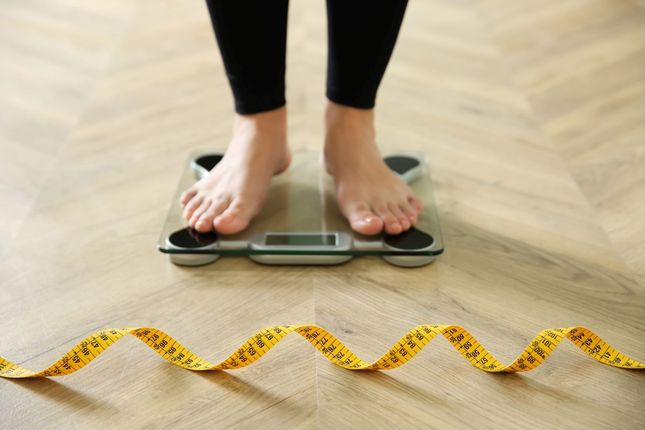Many people have put on a few kilos over the last three years since the beginning of Covid. Perhaps it’s because people were spending more time at home and not exercising as much. Or, it could just be your diet.
Disclaimer: We are not GPs or endocrinologists. This info is based on personal experience. Everyone’s body and chemistry is different. See your doctor before embarking on any drastic measures.
You might think that your diet is fairly healthy, but do you know how much sugar you’re actually consuming?
Consider giving up all sugars in your diet
If you’ve put on inches around your waist and belly during Covid, you might be eating more sugary foods than you think. Sugar is in almost everything that we eat, not just what we add to our food or spoon into our tea or coffee.
Starchy foods such as bread, pasta, potatoes, carrots and peas all break down into sugars when you consume them. In addition, processed foods all contain sugar as do most dairy foods. Even those labelled as low fat (or especially low-fat foods) contain large amounts of sugar.
Some vegetables and most fruits also contain sugar
This might be a surprise but starchy vegetables such as carrots, peas, and sweet corn also contribute to your sugar intake as the starches break down into sugar. Then there are fruits. Most of these contain sugar in the form of fructose.
All the sugar that you now consume, even in natural foods such as fruits and vegetables, will have contributed to your Covid kilos.
When we consume excessive amounts of sugar, our body will immediately put that into storage because it can’t be used up all at once. The preferred storage for our body is in our liver and our muscles.
Too much sugar CAN (for some people) lead to what is known as ‘insulin resistance’, which means our body will store excess sugar in fat cells. And that’s where those extra inches around your waist and belly may have come from.
Try a sugar-free diet combined with exercise
If you’ve tried to shift those Covid kilos and nothing seems to be working, consider giving up all sugar for a couple of weeks or take up a 30-day no-sugar challenge and combine this with some good cardio exercise.
Of course, it’s important that you consult with your doctor first before you launch into any new diet or exercise program.
A no-sugar diet consists of eliminating all those foods that contain sugar including starchy foods such as bread, pasta, breakfast cereals, cakes, biscuits, pastries, fruit high in fructose, and starchy vegetables. You might have to spend some time when you’re shopping reading the labels on the foods that you would normally eat.
Sadly, if you love a glass of wine or beer at dinner, you’ll be giving this up as most alcoholic beverages are high in sugar.
What can you eat on a sugar-free diet?
There are still plenty of foods you can enjoy without loading your body up with sugar.
Vegetables such as broccoli, spinach, cauliflower, zucchini and asparagus are all low-sugar foods. Fruits such as lemons, limes, raspberries, strawberries, kiwi fruit, grapefruit, watermelon, and avocado are also relatively low in sugar. Try to keep these to a minimum if you’re opting for a no-sugar diet though.
Proteins such as chicken, fish, beef, eggs and tofu are great for satisfying your hunger without adding copious amounts of sugar to your diet. And although complex carbs such as brown rice won’t cause a sugar spike, for weight loss you might think about avoiding eating them.
What could happen with a sugar-free diet
Remember, we aren’t doctors; the effects described come from personal experience.
- You’ll drop clothing sizes. Sugar attracts water. When you go sugar-free, you’ll lose the fluid weight you’ve been carrying around your middle and your face will lose any puffiness. Yes, you’ll see any wrinkles but you’ll have regained your wardrobe.
- Your feet won’t hurt. IF (and it’s a big IF) sugar is your problem, it can cause inflammation that leads to burning feet, sore feet or itchy feet. When you cut out sugar, the inflammation goes or lessens.
- You’ll get a better night’s sleep. Sugar holds water; when you go sugar-free, you won’t need to get up in the night as often (or at all).
How to make your low- or no-sugar consumption sustainable
For most people, giving up all sugar is not sustainable for long periods. Therefore, it’s important to look for more sustainable long-term solutions. This should be fairly easy if you’ve already tried the no-sugar challenge for 30 days. So once
Once you’ve dropped the kilos, be more conscious of what you consume on a daily basis but do allow yourself the occasional treat now and then. So, eat more of the healthy foods that contain no added sugars and limit the intake of other foods that will supply your body with added sugar.
You also want to ensure that you get plenty of exercise, drink lots of water, and always get a good night’s sleep.
Want to learn more about making the most of your next 30 years?
We’re committed to making life better for the over 55s. Check out downsizing.com.au for more insights and great advice on living life to the fullest.


